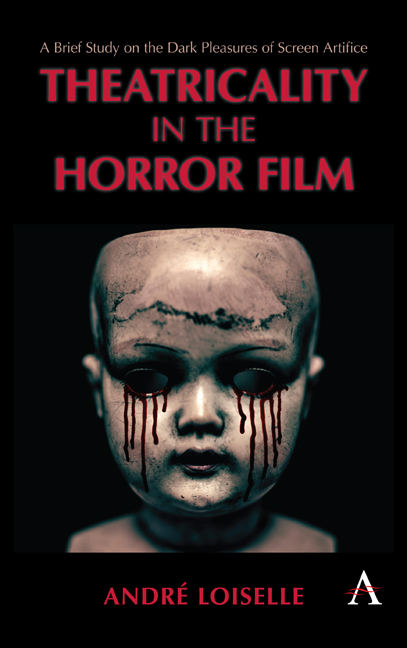Book contents
- Frontmatter
- Contents
- List of Illustrations
- 1 Introduction: Of Monsters and Monstration
- 2 Horror, Realism and Theatricality
- 3 The Theatricality of Monstrous Villainy in Film Adaptations of Horror Plays
- 4 The Theater as Locus Horribilis: Staging the Paradox of Tragic Horror
- 5 The Theatricality of Horror: Characters, Unities and Styles
- 6 Conclusion: The Theatricality of Horror Spectatorship
- Bibliography
- Index
5 - The Theatricality of Horror: Characters, Unities and Styles
Published online by Cambridge University Press: 16 November 2019
- Frontmatter
- Contents
- List of Illustrations
- 1 Introduction: Of Monsters and Monstration
- 2 Horror, Realism and Theatricality
- 3 The Theatricality of Monstrous Villainy in Film Adaptations of Horror Plays
- 4 The Theater as Locus Horribilis: Staging the Paradox of Tragic Horror
- 5 The Theatricality of Horror: Characters, Unities and Styles
- 6 Conclusion: The Theatricality of Horror Spectatorship
- Bibliography
- Index
Summary
The masked killer, the isolated cabin in the woods, the time- sensitive, narrowly focused plotline revolving exclusively around surviving the monster's assault and the use of unsettling stylistic effects, those are all central components of the horror film, and not coincidently, these well- known devices are rooted in theatrical traditions. Some elements of the horror film date back to ancient Greek tragedy, when spectators were first incited to imagine the ruthlessly vengeful Furies who materialize to haunt and torture matricidal Orestes at the end of Aeschylus's The Libation Bearers (458 BC): “They come at me! Hordes of them! Their eyes drip blood […] it's horrible” (Aeschylus 2007, 112). This chapter will argue that the main elements of drama— characters, the three classical dramatic unities and styles— are central to the cinematic tale of terror and reflect the fundamental theatricality of the genre in a wide range of films that do not explicitly refer to the theater.
Characters
Horror in ancient tragedy is commonly associated with the grotesque masks of the Furies: “when these dreaded creatures first rush on robed in black, with savage masks and snakes in their hair, there is a panic among the audience” (Baldry 2015, 140). While the mask in Ancient Greece could inspire terror, as in the case of the Furies, it was not its only function. As Agnes Schwarzmaier explains, ancient Greek masks “did not register fleeting emotions; rather, they conveyed the figure's essential nature, his or her unchanging character and social status.” In comedy, there “were masks for slaves, cooks, parasites, flatterers, and others whose characters were obvious because of their masks.” The mask also served the very simple and practical purpose of making the characters “easier to see from the back seats of large Hellenistic and Roman theaters” (Schwarzmaier 2010, 44). Beyond these pragmatic uses on the ancient stage, the mask has always served multiple purposes in social practices, religious rituals and secular art.
Citing numerous sources, not only from the fields of theater and film studies but also from anthropology, sociology, psychology and so forth, Sears A. Eldredge in Mask Improvisation for Actor Training & Performance (1996) reports that the mask has five major functions: the mask- as- frame, the mask- as- mirror, the mask- as- mediator, the mask- as- catalyst, and the mask- as- transformer.
- Type
- Chapter
- Information
- Theatricality in the Horror FilmA Brief Study on the Dark Pleasures of Screen Artifice, pp. 73 - 98Publisher: Anthem PressPrint publication year: 2019



